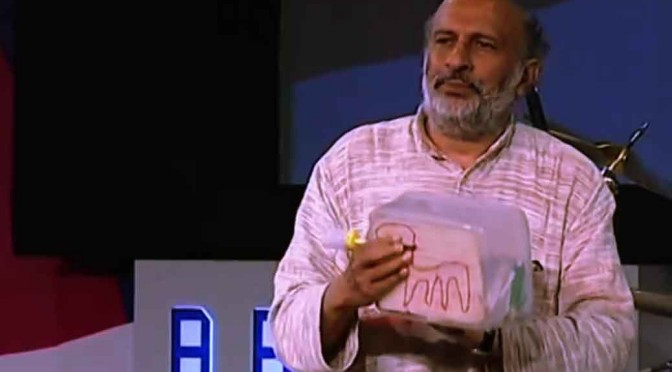By Anupum Pant
Background
We are all born scientists. Young kids have an inborn talent of thinking and learning by interacting with their environment – just like scientists do. Their everyday play is a type of experimentation and the toys they use, are their scientific equipment.
But unlike the children of developed countries, in India, a major chunk of little kids are not fortunate enough to cross ways with these fancy toys. In a place like India where 70% of the nation’s population still resides in backward villages, a man like Arvind Gupta is doing some really incredible work that deserves a salute. He’s popularizing science among kids by showing them quirky ways to convert trash into useful toys.
The Story of Mr. Gupta
He is the Indian Bill Nye – the Indian science guy – Arvind Gupta.
Arvind Gupta calls himself a toy maker (I think that is a very humble name he gives himself) and he has been doing it for the last 30 years! During the 70s when Mr Gupta was studying in IIT – Kanpur, he lived through a period which came with a revolution that aimed at revitalizing primary science in the village schools. Later, he went to the US, studied at Caltech, came back, worked at the top research laboratories in the country, and yet he wasn’t satisfied.
He somehow felt that the cutting-edge research he was doing, its effect on the major part of the Indian people wasn’t directly visible to him. This was when he started a village sized program to popularize science among the rural kids. He continues to do this even today. His way of doing it – Teach them to convert trash into toys. It was a beautiful idea.
I still remember watching Arvind Gupta on Doordarshan, teaching us science. We never noticed we were learning – by touching, feeling, cutting, sticking – pulling things apart and putting things together.
His toys
He can turn anything into a toy that explains a basic science principle in a very interesting way to children. For instance, his way of sticking match sticks together to make objects as simple as 2 dimensional angles to objects as complex as bucky balls, is just amazing. But that’s not all.
Go to his YouTube channel you’ll find a number of tutorials to create amazing little devices from trash, which even adults will enjoy. Besides that, to cater to the linguistically diverse population of India, his videos come in languages like Hindi, English, Tamil, Bengali etc…
Watch his talk below. In a 15 minute breathless talk you’ll watch him demonstrate everything from simple mathematical, biological, chemical and physical principles with match sticks and rubber tube parts, to at least twenty other plain yet ingenious toys. Watch him make it all, right there at the talk! You can’t miss it.
The one I like the best is the slate he makes, using wool and velcro, for blind people. The second best toy in my opinion is the incredibly simple whistle made by cutting a straw. The crank generator made of trash is impressive too! What do you like to most? Let’s discuss in the comments below.
Every kid would love science this way.
Did you like this article?
Every day I send out a newsletter with an un-cut new article and exclusive content for readers. It’s basically my way of keeping in touch with you and letting you know what’s going on. Your information is protected and I never spam.
Subscribe from the sidebar to stay connected. Feel free to reply to these newsletters too…
